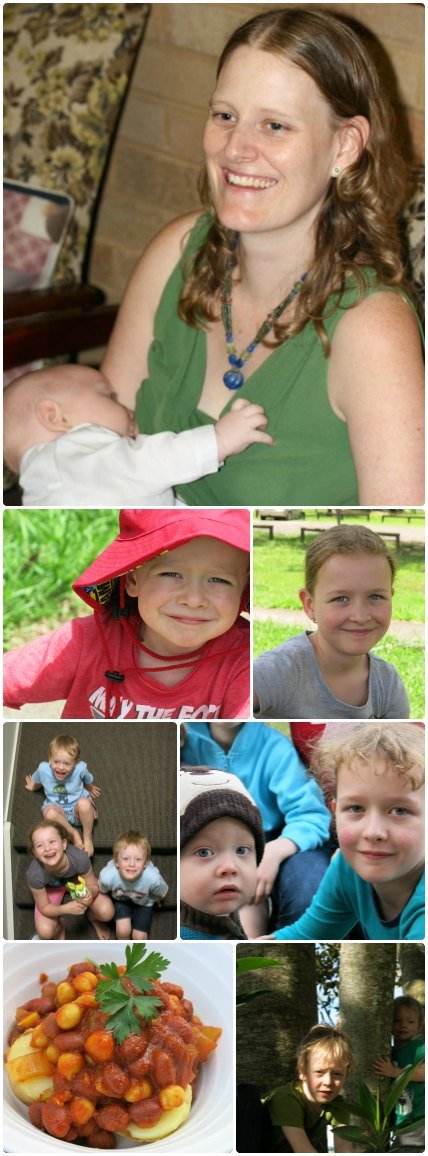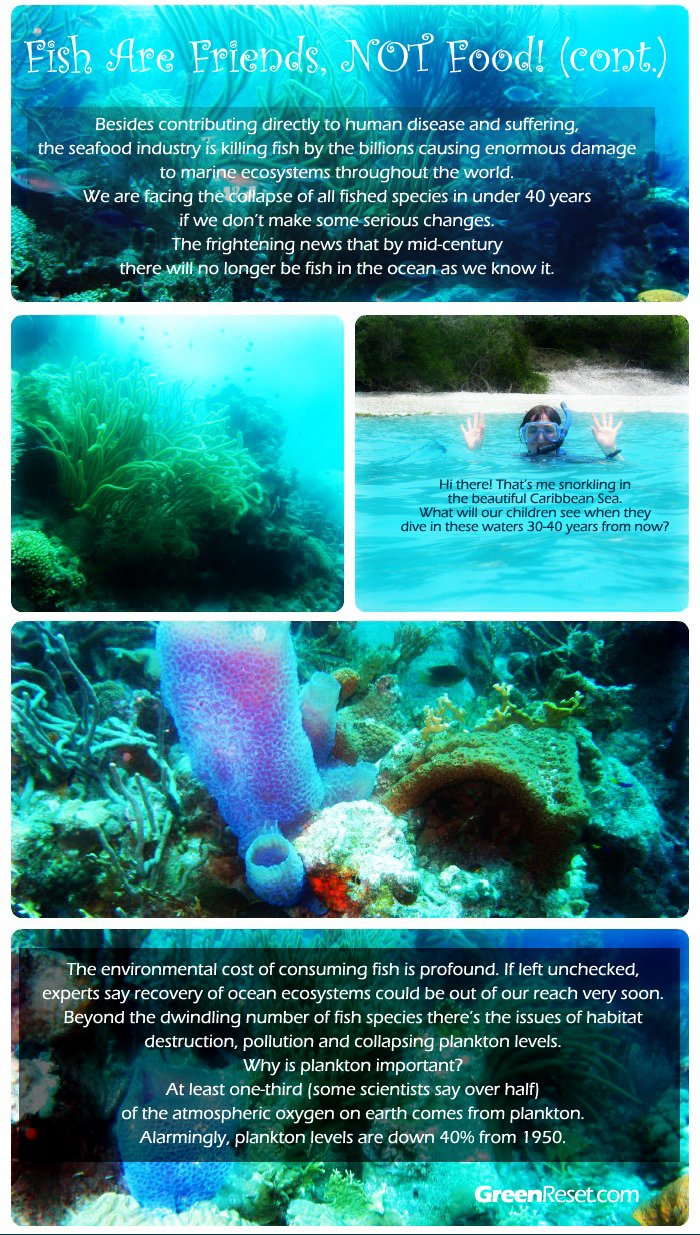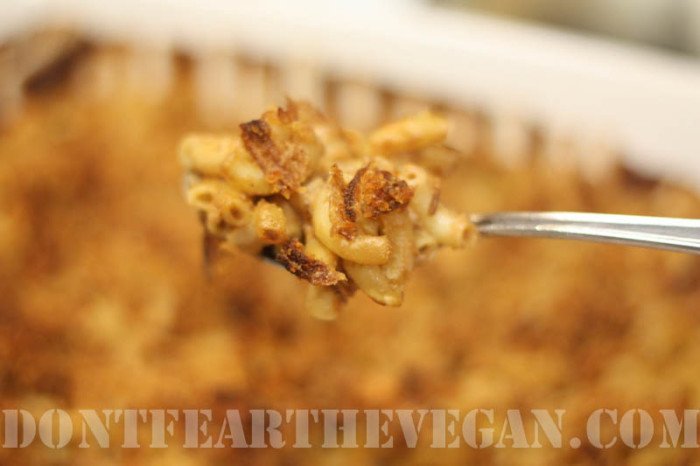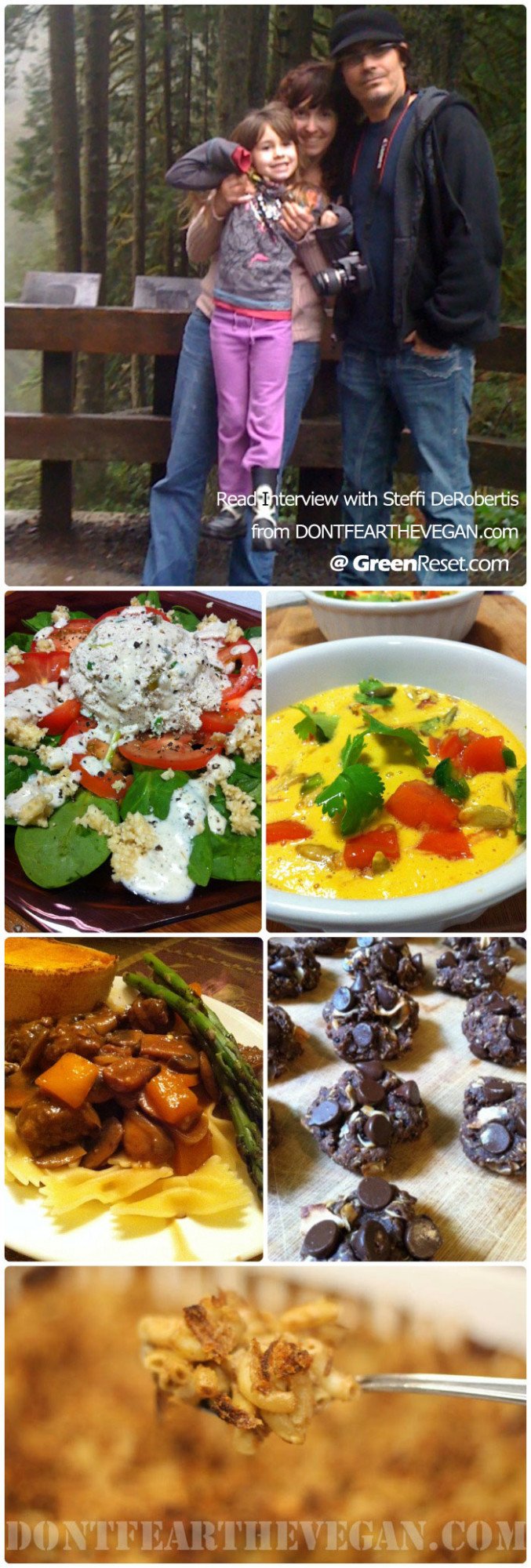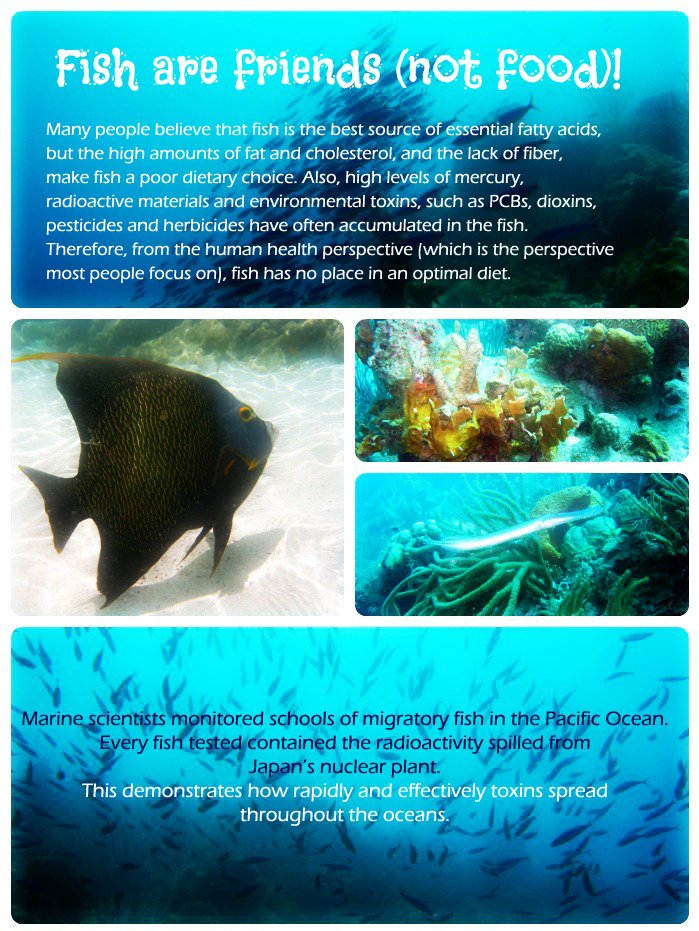I am originally from Southern California. The town of Diamond Bar, 45 miles east of Los Angeles. I am a full time working mom of an energetic 9 year old girl, Anzia. My husband and I share the responsibility of home schooling Anzia and are both active in her social extra curricular activities like soccer and Girl Scouts. My outlet for stress has always been cooking which lead to starting Don’t Fear the Vegan.
Hubby and I went vegetarian in 2000. When Anzia was born with a dairy allergy in 2004 I began eating a plant-based diet, though when I was done nursing I went back to eating dairy. It made me extremely ill. The more reading I did, the more I realized I did not want to support the dairy industry. I have lived a complete vegan lifestyle for 5 years or so. Anzia has been vegan from day one.
Our house became completely vegan in 2004. The most difficult part for me was visiting places like my elderly grandparents, having them try their hardest to make me something I could eat, to find out that they added sour cream or mayonnaise. I didn’t have the heart to tell them I couldn’t eat it. Until I was able to get over this hurdle I did not call myself vegan. The food itself was pretty easy. Plus, it made coking an entirely new adventure.
Yes, fortunately they are. I often wonder how people manage in households with different eating habits.
Anzia is extremely picky. She prefers things raw and not mixed. A veggie tray and sliced uncooked tofu is her ideal meal. Though her favorite food is a somewhat odd choice… hearts of palm. I have learned to leave a little of all the elements of my creations out for her plates. If I am making a nut loaf, i give her the same nuts or bean by themselves, etc. Then she has to try a small portion of the finished meal. It works for us and it gives me the piece of mind that she is getting the nutrition she needs.
No matter how I try them I am not a fan. It may be psychological though. If I add beets or other things that change the color I am able to tolerate them much better. I definitely prefer juice over smoothies, the pulp in a smoothie makes it difficult to swallow.
We have spent a lot of time reading over the years and have learned a lot from Dr. McDougall. I take a D vitamin and mostly use nutritional yeast for my B vitamin. I give Anzia a vegan multi-vitamin for kids, just to make sure we aren’t missing anything.
We are extremely lucky living in Seattle and run into very few situations. When traveling Anzia and I are pretty adaptable and can usually make it work. When we are in unfamiliar territory I tend to look at the menu ahead of time and make sure it is going to work for him. If not, we eat ahead and enjoy the company. I carry a back pack of food when exploring new places.
Social experience have become more stressful since Anzia has acquired more friends her age, which include more social functions. There have been some places that despite the fact that we have been attending functions since she was 4, still never accommodate her and even though we are paying for the pizza party we have to bring our own. That is not the norm though. Most of the people in our lives are super accommodating. Sometimes to the point where I feel bad that they have gone so far out of their way. The last three birthday parties she has attended the parents have made sure she was taken care of.
As far as professional, I work around a lot of foodies, and though I may have to endure some of the typical vegan jokes, I am always thought of at food gatherings. It is also odd that when people find out that I am vegan, they feel the need to explain why the participate in certain things, like why they are vegetarian and haven’t made the leap to being vegan. I just keep bringing them food to show how good it is.
This was awesome. It can be really difficult in the beginning, especially in areas where there are no other vegans around. I think people need to know that though some vegans just woke up one day and said “I am vegan,” there are just as many who struggled, but had their heart in the right place and eventually found their way. Telling our stories gives different people something to relate to and possibly find comfort in.
If you have a favorite recipe, why not submit it here in the comment section of this smoothie recipes blog for others to enjoy too!
I also welcome any comments, questions and suggestions. Thanks!
I’m happy to present you with another interview in my “Powered by Plants” series. It’s with Ally from MadeofStars.com. I hope you’ll enjoy it as much as I did.
Name: Ally
Location: Australia, the Far North coast of New South Wales
Occupation: Consultant to the not-for-profit sector
Blog Name: Made of Stars
Twitter: @madeofstars1
1. First off, please tell us a bit about yourself (where are you from, what do you do, etc.)
I live in Australia, on the Far North coast of New South Wales. My husband, Mat, and I grew up in Sydney, and moved to the country a decade ago. We are both Social Workers.
I have spent most of my working life advocating for women and children who have experienced family violence, and are navigating the legal system. Currently, I am working (from home) as a consultant to the not-for-profit sector.
We are the parents of 4 tiny vegans – a daughter aged 9, and three sons aged 6, 4, and 14 months.
2. How long have you been vegan and what was your motivation for going vegan?
I have been an ethical vegan for 17 years. Embracing veganism is one of the best life decisions I have ever made!
As a child, I shared my life with dogs, cats, birds, mice, and fish. I was a self-proclaimed ‘animal lover’. Yet, I ate animals. Rather, I ate some animals. As a child, I would have been repulsed if somebody had suggested that I eat dogs or cats. But, for the most part, I did not question eating cows, chickens, and pigs.
When I was about 6 or 7, I did ask about the origins of the beef on my dinner plate. My godmother told me that ‘the cow’ had died of old age. In other words, the cow had not suffered. I accepted this response. I think that I would have embraced vegetarianism earlier, if an adult had been honest with me. It was another decade before I questioned the necessity of eating meat.
At 16, I stumbled upon a book in my local library: Old MacDonald’s Factory Farm: The Myth of the Traditional Farm and the Shocking Truth about Animal Suffering in Today’s Agribusiness. I was profoundly impacted by the words and images in this book. Why didn’t I know about the barbaric treatment of ‘food’ animals? The scale of misery and torment detailed in the book galvanized me – I stopped eating meat. However, I continued to eat fish, eggs, and dairy products.
Eventually, all of the pieces of the puzzle came together. I awoke to the suffering of ocean dwelling beings, ‘egg-industry’ chickens, and ‘dairy’ cows. I faced up to the fact that fish felt pain, and were just as ‘alive’ as cows and pigs. I began to question how I could continue to support industries that treated bobby calves and male chicks as waste products. How could I, a feminist and human rights advocate, support the enslavement of cows and the theft of their offspring? It became apparent that veganism was the appropriate ‘next step’.
At 19 years of age I embraced, wholeheartedly, a vegan ethic. I have never looked back!
3. What was the transition to all plant-based diet like? What was your greatest challenge? Do you have any advice for people who are considering making the switch or who are still going through a transition?
In the mid-90’s, I was a university student living with my parents, in Sydney. Mat (my ‘new’ boyfriend at that time!) and I frequently visited vegan restaurants. I read New Vegetarian magazine and Vegan Voice magazine. I joined Animal Liberation.
My younger sister embraced veganism as well. Many of our university friends were developing an interest in animal rights.
When I stopped drinking cows’ milk, I began drinking black tea and herbal tea. I switched to soy milk for cereal and baking. At that time, the only non-dairy milk available was soy milk. There was only one brand in the supermarket, and I disliked it. In order to ‘condition’ my taste buds to soy milk, I purchased the chocolate-flavoured variety, and watered it down with ice cubes. Once I had developed a taste for the chocolate variety (without the ice cubes), I switched to plain soy milk.
I adapted to the taste of pasta, pizza, toasted sandwiches, and Mexican food minus the dairy-based cheese. There wasn’t any decent vegan cheese available at that time, so I did not replace dairy cheese with non-dairy cheese. Nowadays, vegan cheese is a bit of a novelty for me. I do like a slice of Vegusto cheese on a cracker, or a sprinkling of cheezly on a pizza. But vegan cheese is not a regular staple in our house.
When transitioning to veganism, I believe it is important to surround yourself with positive, supportive people. Socialising with like-minded vegans is important too. If possible, attend a local vegan ‘meet-up’. We regularly attend meet-ups for vegan families. I believe that it is important for my children to socialise with vegan children and vegan adults. This helps to ‘normalise’ veganism.
Remind yourself constantly, of why you have transitioned. Read health-based and ethics-focused literature. Watch documentaries that promote veganism, and join a local animal rights organisation.
If you do fall off the wagon, jump back on with gusto. Ditch the guilt, and re-ignite your commitment. Remind yourself of the sacrifice that animals make. Keep a picture of a bobby calf on your fridge, or as a screen saver on your phone.
4. Is your family vegan? If yes, how did that happen?
Yes, we are raising our children vegan. They have been vegan their whole lives. I have had 4 four healthy vegan pregnancies.
Promoting veganism to our children goes beyond ‘food’. Vegan parenting involves nurturing our children’s compassion for, and curiosity about, non-human animals. Animals are not a food source in our home. Our children know that meat is a dead animal. They know that a meal of meat means that an animal died – an animal that did not want to die, and fought for life.
My eldest son once asked: ‘can I eat vegan and non-vegan food when I am older’? In my reply, I used chickens as an example, and told him that if he ate ‘chicken’, a chicken must first die. I will not sugar coat that. My children deserve to know the truth. ‘Food’ animals suffer brutality and death at the hands of humans and, for them, I must be truthful. I wish I had been told the truth as a child. My children have no desire to harm animals, and I want them to understand that meat is the product of an animal that has been harmed.
Our 4 year old is going through a stage of asking all our visitors: ‘Are you vegan’? During dinner time at our house recently, he asked our guest – my daughter’s friend- if she was vegan. When she answered ‘no’, he asked: ‘then why are you eating vegan food’? J
My kids rarely watch commercial TV, so they have been largely sheltered from fast food advertising. Recently, however, we saw an ad for a ‘chicken’ fast food outlet. My 4 year old son said: ‘I don’t want to eat chickens. I like chickens’.
My daughter is 9, so we can discuss more advanced concepts with her. Obviously, I am reluctant to reveal too much about the horrors that animals endure at the hands of humans. I have no desire to traumatise her. I shelter myself from news items and online videos about animal abuse.
I am happy that my daughter has embraced a vegan ethic – she ‘gets’ it. Recently, our daughter’s school teacher showed Mat and I a piece of her schoolwork. In class time, the children were required to write a passage of persuasive text about a topic of their choice. My daughter wrote about not eating animals. In her piece, she argues that it is not fair to animals if people eat them when they could eat vegetables instead.
My children are fortunate to have friendships with vegetarian and vegan children. Wonderfully, my daughter’s best friend, Dan, is also a vegan.
My school-age children attend an independent school that promotes a vegetarian diet. School lunchboxes and school functions must comply with a sentient (or yoga) vegetarian diet. In this context, not eating animals is ‘normal’ for my children.
5. Do you have to deal with picky eaters?
My 6 year old son is the least adventurous eater in our family. He is wary of new foods, but he does eat a wide range of foods. He loves fruit. He is not keen on some vegetables, such as mushrooms and tomatoes, but he enjoys others such as broccoli, carrots, and raw capsicum.
His favourite snacks are peanut butter and banana sandwiches, and red apples. He adores salt and pepper tofu. He is partial to mixed berry sorbet. He also likes cake. Which isn’t surprising – he is my son after all! I am not known for my ability to resist a rich chocolate cake or a tangy cheezecake.
6. Can you perhaps share your favorite recipe, if it’s not a secret :-)?
Chilli beans is a meal that is on high rotation in our household. It is simple to prepare, and there are many different ways of serving it. You can find the recipe here.
The weather is cooling down here as we head towards winter. At this time of year, my family also enjoys vegetable curries with rice, vegetable and tofu stir fry, baked root vegetables, soups, dahl with rice, and pasta dishes. I adore a big, warming bowl of spicy Laksa.
Mat and I also enjoy eating a combination of sliced mushrooms – shiitake, enoki, swiss brown, oyster, white button – cooked in olive oil, garlic, and parsley. This is a simple, yet delicious, side dish.
In terms of ‘eating out’, vegan yum cha is a family favourite. My kids also enjoy Japanese food. They all like seaweed!
We don’t eat dessert at home. However, my mum usually bakes a cake if we are having dinner at my parents’ house. She makes delectable chocolate cakes and cheezecakes. These are definitely popular with my children!
7. Do you drink green smoothies or green juices?
Yes, Mat and I drink a green smoothie each morning. We first discovered green smoothies when we became interested in raw food about 5 years ago. Currently, we aim to have a daily green smoothie, and this task is made easier by the presence of a high-powered blender in our kitchen.
This morning, our green smoothie consisted of banana, pear, oranges, strawberries, water, coconut butter, ground flax seeds, kale, and cos (romaine) lettuce. We are currently visiting my mother-in-law in Sydney- and we brought our blender with us! So, she is also indulging in green smoothies each morning. I think we have a convert!
8. What are your strategies and tips for eating out and dealing with social situations? Do you have any advice for new vegans?
Plan ahead.
If I have been invited to an ‘unfamiliar’ restaurant, I find it best to phone them and ask about vegan options, rather than waiting until I arrive.
If you are going to an event that does not permit BYO food, and you are unsure about the availability of vegan food, eat before you go!
When my children receive an invitation to a birthday party, I always contact the parent/s and offer to prepare a vegan dish (or 2) for all of the party-goers to share. I certainly do not expect the party organisers to alter their meal plan – I know how stressful party organising can be! I have found that most children’s parties have ‘incidental’ vegan food on the menu – fruit platters, rice crackers, hommus, popcorn, plain potato chips (crisps).
When my daughter was a toddler, I feared that I would one day develop ‘baking fatigue’ as a result of all the cupcakes I would need to bake for her to take to other children’s birthday parties. However, I have been heartened by the willingness of other parents to cater for my children. It often isn’t necessary for me to send vegan food or even a vegan cake substitute, as many of the parents make sure that vegan food is available, including cake. It is a gesture that I appreciate immensely.
Finally, do not apologise! You do not have to apologise for being vegan. You are not an inconvenience, or a ‘hassle’. Just let people know at the earliest opportunity that you are vegan, and be prepared to bring delicious food to share.
